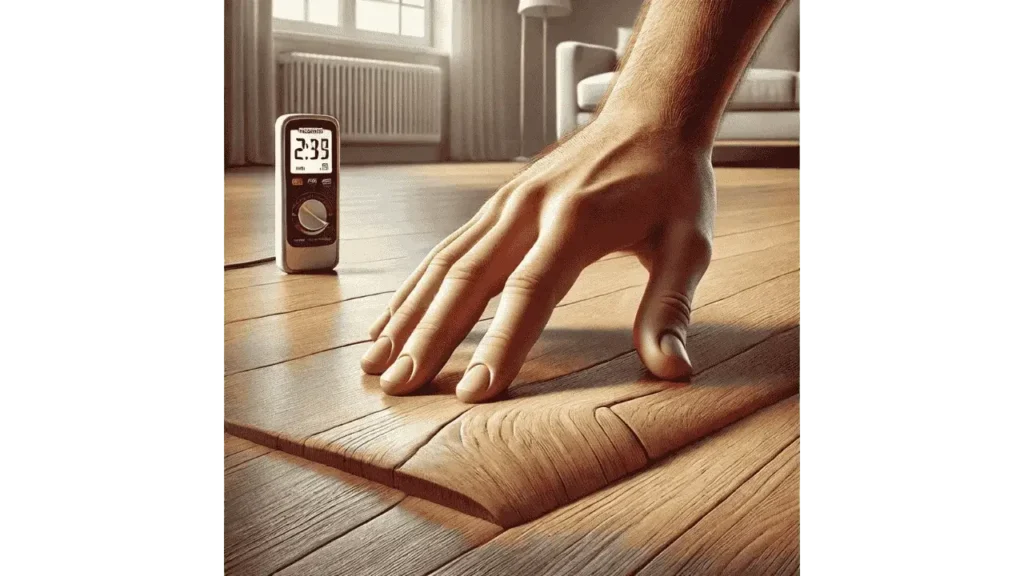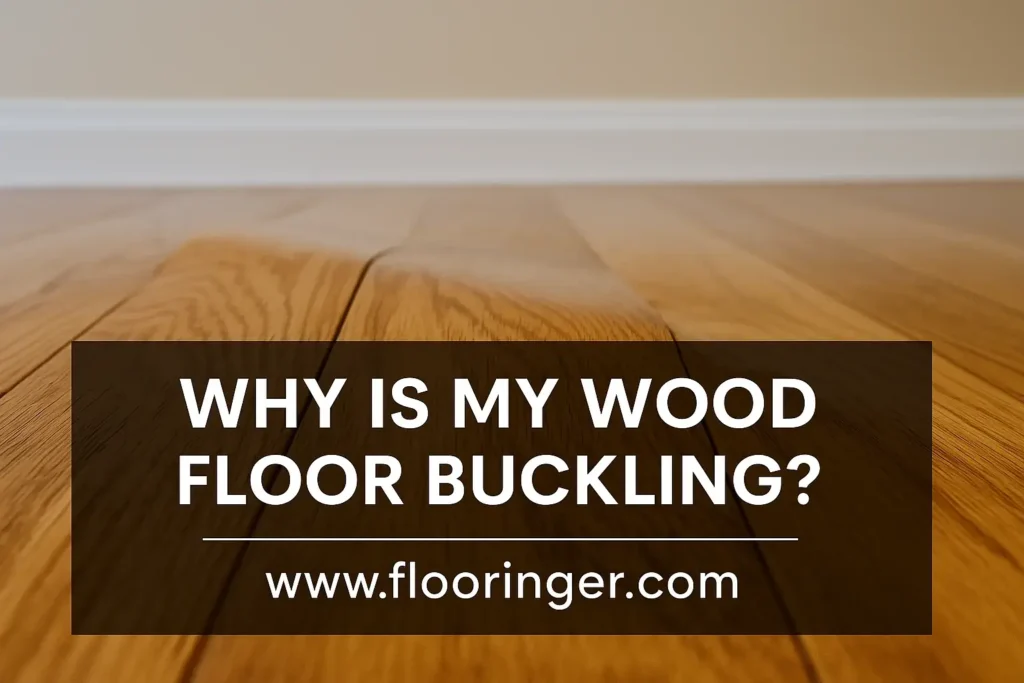Buckled wood floors are a frustrating issue for homeowners, often resulting in warped or uneven surfaces that compromise both appearance and safety. Understanding the causes and solutions for buckling can help you address the problem before it worsens. This guide explains why wood floors buckle and provides effective methods to fix and prevent this common flooring issue.

What Are Buckled Wood Floors?
Buckled wood floors occur when floorboards lift or warp away from the subfloor. This can create raised sections, gaps, or an uneven surface. Buckling typically happens due to excess moisture, improper installation, or environmental changes that cause the wood to expand and contract beyond its capacity.
What Causes Wood Floor Buckling?
Water Damage
Excess moisture is the most common cause of buckled wood floors. Water from spills, leaks, or flooding can seep into the wood and cause it to swell and lift. Unchecked water damage can lead to severe buckling, requiring significant repairs.
High Humidity
High indoor humidity levels can make wood floors expand over time. In climates with excessive humidity, wood naturally absorbs moisture from the air, leading to warping or buckling. Without proper climate control, floors become vulnerable to long-term damage.
Improper or No Acclimation
Wood flooring must be properly acclimated to a room’s temperature and humidity before installation. Skipping this crucial step can result in boards expanding or contracting after installation, leading to buckling.
Improper Installation
Incorrect installation methods can also contribute to buckling. Failing to leave expansion gaps around the room’s perimeter or using the wrong adhesives can restrict the wood’s natural movement, causing it to lift when it expands.
Wood Floor Repair: How to Fix a Buckled Wood Floor?
Identify and Address the Cause
Before attempting repairs, it’s crucial to identify and resolve the underlying issue. Check for water leaks, excessive humidity, or installation problems. Fixing these issues first prevents future damage.
Dry the Affected Area
If moisture is the cause, thoroughly dry the area using fans, dehumidifiers, or ventilation. Quick action can prevent permanent damage and reduce the need for extensive repairs.
Apply Weight or Reinstall Loose Boards
For minor buckling, placing heavy objects over the raised boards can help flatten them. In more severe cases, carefully remove the affected boards, dry them, and reinstall them correctly.
Sand and Refinish the Surface
If slight warping remains, sanding the floor can help level out minor imperfections. After sanding, refinish the floor to match the surrounding area.
Replace Severely Damaged Sections
If the damage is extensive, replacing the buckled floorboards may be necessary. Match the new boards with the existing floor to maintain a consistent look.
How to Prevent Wood Floor Buckling?
Control Indoor Humidity
Maintain indoor humidity between 35%-55% using dehumidifiers or air conditioning. This prevents the wood from expanding due to excess moisture in the air.
Clean Spills Immediately
Wipe up any spills right away to prevent moisture from seeping into the wood. Quick cleanup minimizes the risk of water damage.
Proper Installation Practices
Ensure proper installation by hiring experienced professionals. This includes leaving adequate expansion gaps and properly acclimating the wood before installation.
Conclusion
Buckled wood floors are often caused by moisture, high humidity, or improper installation. By identifying the root cause and taking swift action, you can repair and prevent further damage. Regular maintenance, controlling humidity, and ensuring correct installation are key to keeping your wood floors smooth, durable, and beautiful for years to come.
